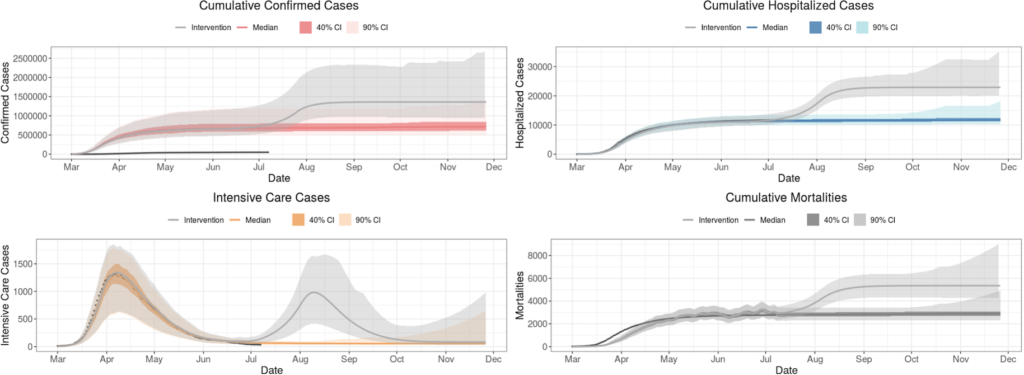
Prediction is hard, especially about the future. While mathematical models by no means guarantee accurate predictions, they at least formalize the process through which one arrives at them. This allows one to criticise their assumptions and, in the event of eventual failure, pinpoint where and why they went wrong.
With respect to COVID-19, van Wees et al. (2020a, 2020b) propose a model to forecast the number of infected cases, hospitalisations, the number of patients in intensive care, and mortalities.
To make this model more accessible, Jan-Diederik van Wees, Logan Brunner, and I have developed a Shiny app that allows one to use the model to (a) forecast the number of cases, hospitalizations, the number of patients in intensive care, and mortalities; (b) assess the potential effect of past and future interventions; and (c) study what happens when measures are automatically implemented once a critical intensive care threshold is reached. The Shiny app includes an explanation of these options as well as a detailed description of the model, so we simply refer to it here.
There exist many models trying to forecast COVID-19 and to understand the potential effect of interventions. Several of them, including for example this one, which structures the population according to age, are more extensive. However, we hope that the relative simplicity of our app allows users to more easily explore the potential effects of interventions.
Forecasting COVID-19 is an enormously difficult, and somewhat controversial task (see e.g. Taleb, 2020; Ioannidis, Cripps, & Tanner, 2020; Steinmann et al, 2020). There is substantial uncertainty about data, parameters, and models. (Uncertainty across models is illustrated nicely in this app, which compares forecasts across different models.) The app we introduce here should thus not be used as a way to forecast the epidemic in the Netherlands and make policy decisions based on those forecasts. Instead, our main aim is to allow users to explore various what if? scenarios, based on one particular model. The app should be a tool to explore questions, rather than to confidently assert answers (see also Saltelli et al., 2020). As there are sources of uncertainty that the model cannot take into account, forecasts based on it need to be interpreted cautiously.
I would like to thank Logan Brunner and Jan-Diederik van Wees for a very enjoyable collaboration.
